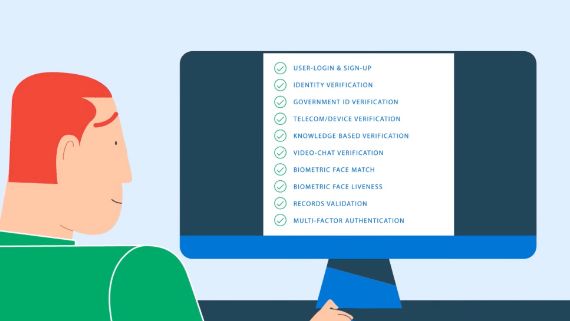Integrating portable digital identity can help federal agencies meet customer experience goals
By Pete Eskew, General Manager, Public Sector, ID.me
President Joe Biden’s Executive Order (EO) on Transforming Federal Customer Experience and Service Delivery to Rebuild Trust in Government targets a solvable pain point between many federal agencies and the people they serve.
Many of the specific initiatives outlined in the EO would transform service delivery born out of necessity during the pandemic into a newer, better “normal.” Now that we’ve collectively learned in-person services can be delivered safely and securely using remote, digital methods, the EO would make permanent what was expected to be a temporary transition to online services – all to the benefit of the citizen experience.
A critical enabler of safe digital services is identity verification. The pandemic has shown us that the traditional, passive, algorithm-only identity verification methods offered by data brokers and credit bureaus are a barrier between vulnerable parts of the population and their federal benefits. Those underserved communities include people who haven’t bridged the digital divide, immigrants, those with recent name changes, individuals with thin or nonexistent credit files, the homeless, young people, and international users.
A secure, equitable, and portable digital identity is one solution that can be leveraged to better serve people in the margins. ID.me provides the first digital identity certified against federal standards to pair rapidly evolving, innovative technology with human relief valves to ensure equity and access for all demographics. People verified through the ID.me network have seamless, portable, single sign-on access to a wide range of government benefits through seven federal agencies and 29 states.
The EO recognizes it’s possible to enable access and equity while maintaining the highest security levels. It also strives to hold agencies accountable for designing and delivering services more effectively, particularly in a way that reduces the time tax, which reflects the level of effort people typically expend trying to access benefits and services.
ID.me CEO Blake Hall pointed to the partnership between ID.me and the U.S. Department of Veterans Affairs (VA) to illustrate the EO’s goals.
“The Executive Order on Transforming Federal Customer Experience and Service Delivery to Rebuild Trust in Government is a great step in making government services easier to navigate and access for all Americans, especially those currently left behind,” Hall wrote in a recent LinkedIn post. “We’ve witnessed the positive impact VA.gov has had on the lives of millions of Veterans, and we’re excited to see that model serve as a blueprint for all digital government services.”
“The team at ID.me like to think we played a small part in inspiring this EO, as we worked hand in hand with the United States Digital Service, Ad Hoc, and the amazing people at the Department of Veterans Affairs Office of Information Technology to create a single digital front door for Veterans. Together, we transformed VA’s digital ecosystem from 500+ Veteran-facing websites to one, organizing benefits and services from the consumer’s point of view, making it much easier to access services.”
Access and equity gains, such as those with the VA, were hard won through collaborative partnerships between industry and government agencies. Those gains can be further leveraged across the agencies prioritized in the EO as they implement simple, accessible, equitable, protective, transparent, and responsive services. Accomplishing that goal will require finding the right partners to help agencies prioritize meeting people where they are.
Building stronger public trust in the federal government, as the EO strives to do, starts with making sure no identity is left behind.
To learn more about selecting the right digital identity partner, read Eight best practices government agencies should require from digital identity providers.




